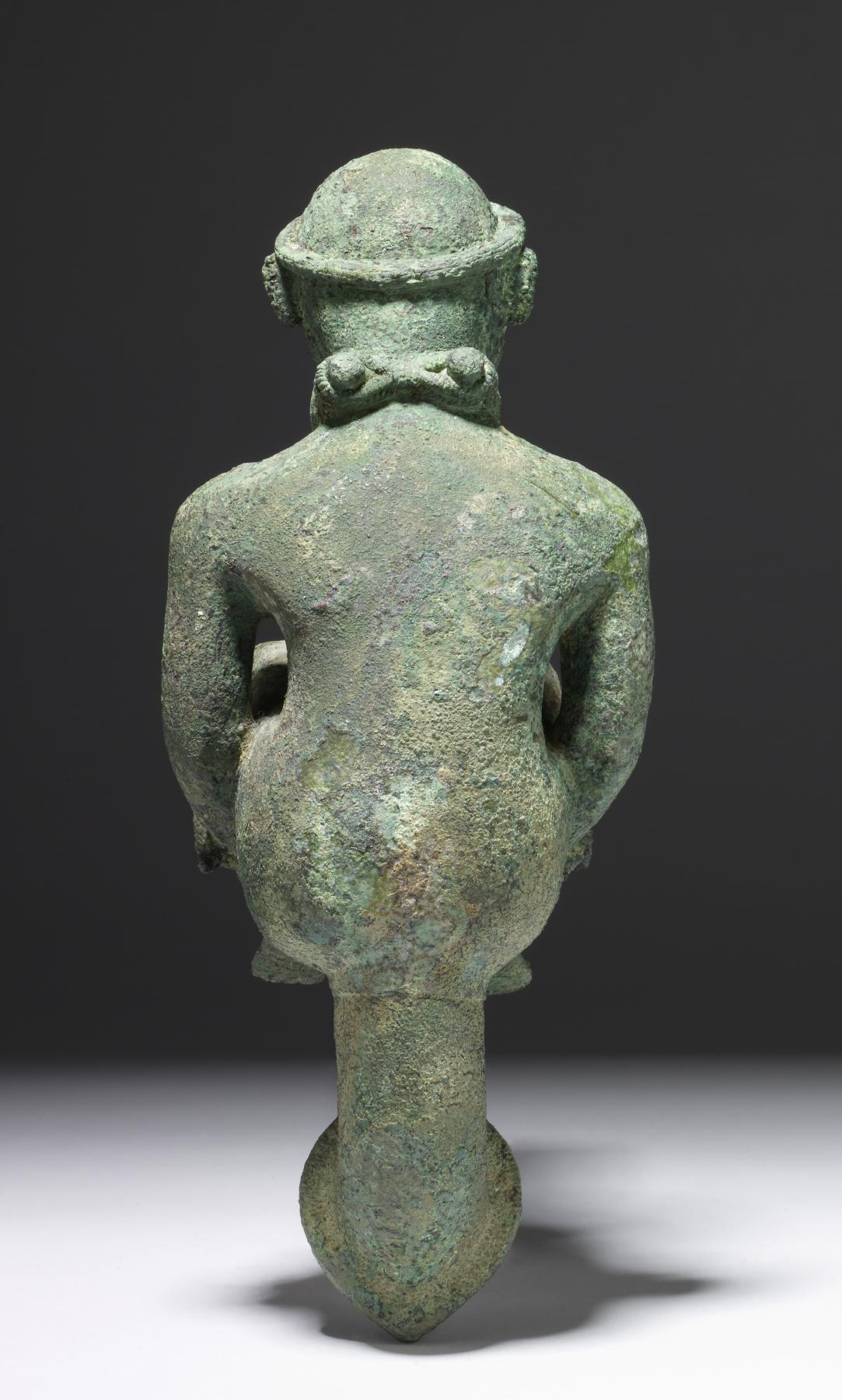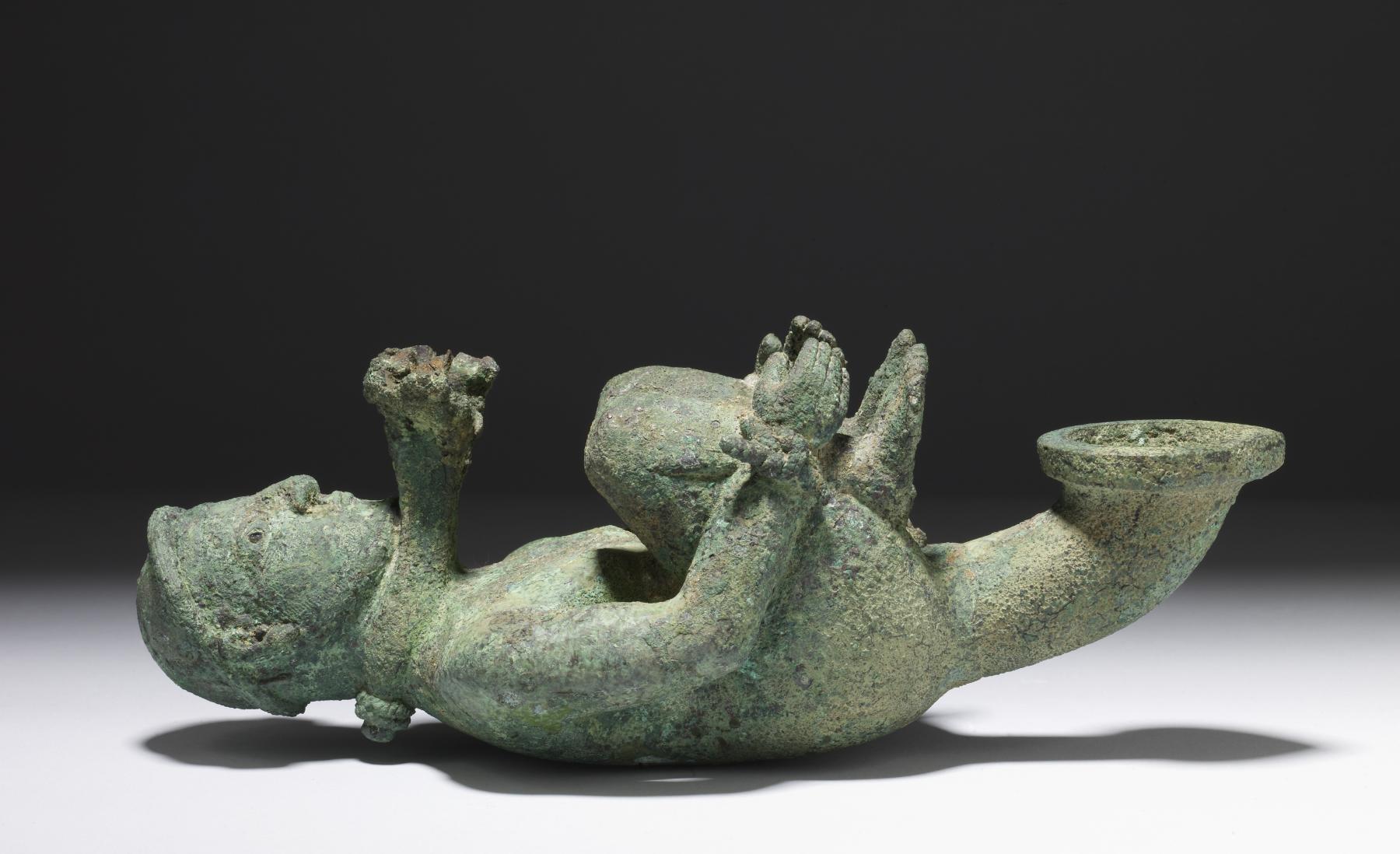Oil Lamp with Bound Prisoner
(Ancient Egypt and Nubia )
Elaborate oil lamps with figural attachments were common at the royal court in the ancient kingdom of Meroë. This lamp depicts a captive nude prisoner, his hands bound to his ankles. The lamp would have been suspended by a chain from the collar around the figure's neck. A Meroitic symbol, perhaps an owner's mark, is incised on the prisoner's shoulders.
Provenance
Provenance (from the French provenir, 'to come from/forth') is the chronology of the ownership, custody, or location of a historical object. Learn more about provenance at the Walters.
Guilhou Sale, Hotel Drouot, Paris, 16-18 March 1905, lot 307 [said to be found in Egypt]; Henry Walters, Baltimore, 1905, by purchase; Walters Art Museum, 1931, by bequest.
Exhibitions
| 2012-2013 | Revealing the African Presence in Renaissance Europe. The Walters Art Museum, Baltimore; Princeton University Art Museum, Princeton. |
Geographies
Egypt (Place of Origin)
Measurements
W: 4 1/8 x D: 3 9/16 x L: 10 in. (10.4 x 9 x 25.4 cm)
Credit Line
Acquired by Henry Walters, 1905
Location in Museum
Accession Number
In libraries, galleries, museums, and archives, an accession number is a unique identifier assigned to each object in the collection.
In libraries, galleries, museums, and archives, an accession number is a unique identifier assigned to each object in the collection.
54.1549








